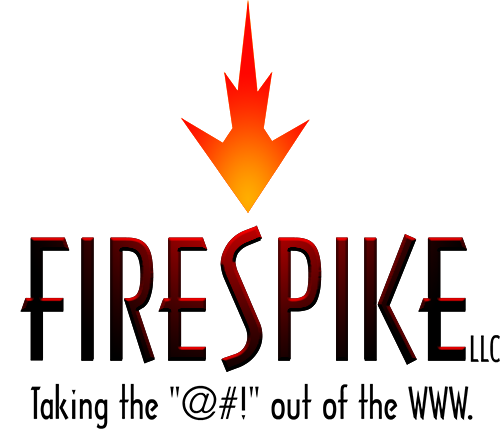Glossary
Basic Web and Internet Terminology and Acronyms
Terms related to purchasing and using your domain name
- URL = Uniform Resource Locator = “domain name” = web address
- Registrar = A company responsible for tracking who owns certain web addresses, and pointing to where those web addresses are hosted.
- Nameserver = a URL that a registrar stores which points where the files (i.e., the website) for a given domain are hosted
Terms related to getting your website live on the Internet
- Host, Hosting = a web host is a company that runs computers on which website files are stored. These computers “serve” those files to people who wish to view those websites.
- Server = a computer that has a website’s files on it. This COULD literally be your own laptop or phone even, but usually (and more safely) is a high-speed computer built specifically for running websites and website software.
- SSL = “Secure Sockets Layer” which is the technology that encrypts and secures communication between a server and a user’s computer.
- Secure Certificate = you purchase a secure certificate to use with your website to make it secure, that is to make it display with the lock in the browser bar, displaying “HTTPS://” before the web address, rather than displaying just HTTP://. PAID secure certificates include insurance to cover the cost of any fraud that happens because of a break in the security. Most websites probably don’t need expensive Secure Certificates, because they do not transfer sensitive information like credit card numbers or social security numbers.
- HTTP / HTTPS = “Hypertext Transfer Protocol” and “Hypertext Transfer Protocol Secure” (i.e, HTTP + SSL)
- LetsEncrypt = a free way to add security to your website. This type of security is not provided by all web hosts.
Terms related to building your website
- CMS = “Content Management System” = WordPress and other tools like Drupal or Joomla.
- “Hosted CMS” vs “Independent CMS” = Hosted solutions like Wix, Squarespace, Weebly etc. (note Squarespace has recently acquired Weebly) and hosted ecommerce solutions like Shopify, BigCommerce, and Volusion provide an entirely online way to build a website that is controlled AT and BY the CMS company’s software. (i.e., you rent your space on their service.) “Independent” CMS solutions like WordPress, Drupal, and Joomla are software that runs on standard web servers, and therefore can be migrated from one host to another. In other words, if you decide you don’t like the company that is hosting your website that uses an Independent CMS, you can take your site, just as it is, and move it someplace else.
- WordPress = the most popular Open Source CMS, available at WordPress.org as an Independent CMS. Also a Hosted CMS available at WordPress.com.
- “Open Source” = software that has been provided by its developers in a way that is free to use or modify. WordPress, Joomla, and Drupal are examples of open source Content Management Systems.
- Theme = a premade website “design” – a packaged set of styles and layouts. Some themes are very flexible and can be used to create very customized website designs. There are many free themes as well as themes that must be purchased.
- Plugin (also sometimes called “extension”) = software that adds onto WordPress or other CMS software to extend functionality. Plugins do everything from very simple functions like adding a simple bit of text to a site, to full e-commerce functionality.
- “Post” = an article or a “blog post”. Usually a dated piece of content in a series of such content within a website.
- “Page” = more “permanent” content on a website. Things like “about”, “contact”, “our services” are dedicated PAGES on a website, as opposed to posts, which are usually dated items.
Other terms to know
- HTML = “Hyper Text Markup Language” – the simple but powerful set of markup tags that is used by browsers to understand the structure and content of web pages.
- SEO = “Search Engine Optimization” — basically, just making website pages more suited for being found on search engines.
- Javascript = A coding language used to make or initiate changes to a web page from the user’s browser. That is, Javascript runs from the user’s computer after the code has been loaded into their browser.
- “Client Side” = “happens on the user’s computer”
- “Server Side” = “happens on the computer that is hosting a website, usually before a web page is even sent to the user.
- CSS = “Cascading Style Sheet” = A way of writing up instructions for how different elements in a web page should be displayed. Examples of things controlled by CSS include fonts (i.e., type faces), colors, text styles, spacing, and positioning.
- PHP = A programming language that runs on the hosting server, building a web page before sending it to the user’s computer.


Follow Us!